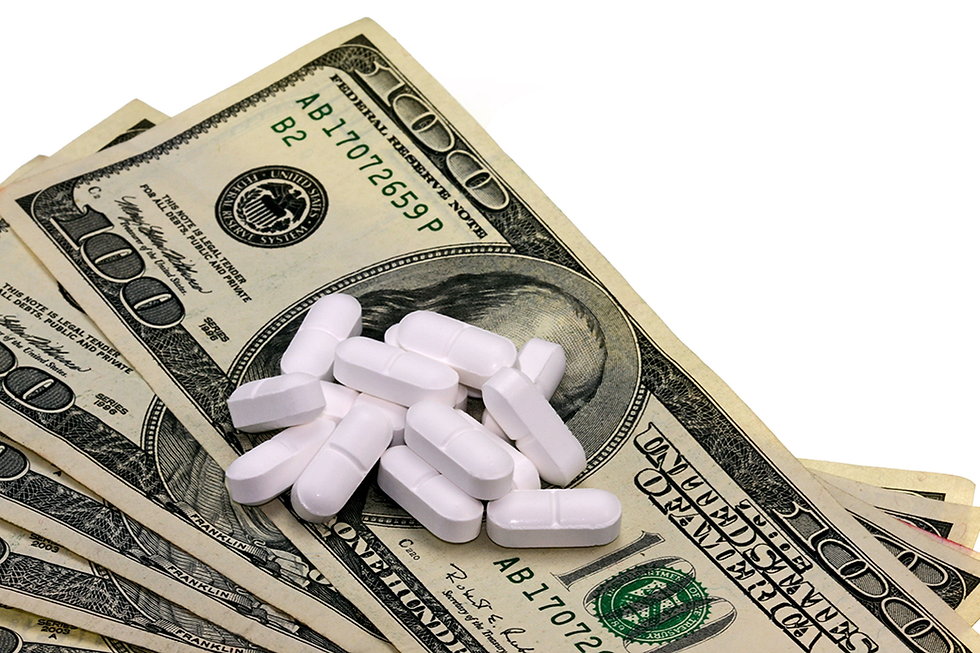2025 & 2026 DRUG PLAN CHANGES
- Ben Murray

- Jul 16, 2024
- 4 min read
Updated: Oct 23, 2024
2025: NEW $2000 Prescription Drug Cap & Payment Plan Option
2026: Medicare Drug Price Negotiation Program

In 2025, Medicare is introducing significant changes that will affect prescription drug costs for over 1 million beneficiaries. These changes include a $2,000 annual cap on out-of-pocket costs and the option to spread these costs over the year through the new Medicare Prescription Payment Plan. Here's what you need to know about these updates.
The $2,000 Annual Cap
Coverage Scope:
The $2,000 cap only applies to medications covered under Medicare Part D plans and Medicare Advantage programs with prescription drug coverage.
It does not apply to drugs covered under Medicare Part B.
Covered Medications:
The cap applies only to medications that are included in a patient's Medicare prescription drug plan.
Medicare Part D plans are required to cover drugs in six protected classes: immunosuppressants, antiretrovirals, antidepressants, antipsychotics, anticonvulsants, and antineoplastics. They must also cover at least two drugs in other categories.
If a prescribed drug is not covered, patients can:
Ask their doctor if a generic equivalent is available.
Look for alternative drugs within their plan’s formulary.
Request a formulary exception from their plan.
Consider switching plans during the Open Enrollment Period (October 15 - December 7).
Important Note:
Payments for non-covered medications do not count toward the $2,000 cap.
Tracking Costs:
Medicare Part D plans or Medicare Advantage drug plans will track a patient's out-of-pocket costs and determine when the cap is met.
Income Requirements:
The $2,000 cap applies to everyone with a Medicare Part D plan or Medicare Advantage program with prescription drug coverage, with no income-based eligibility requirements.
According to KFF’s review of Part D drug claims data, if the cap been in place in 2021, 1.5 million Medicare beneficiaries would have benefited because their out-of-pocket costs for prescription drugs exceeded $2,000. Of the total 1.5 million, about 200,000 Medicare beneficiaries spent $5,000 or more for their prescriptions that year, while another 300,000 expended between $3,000 and $5,000. The rest spent between $2,000 and $3,000.
Introducing the Medicare Prescription Payment Plan (Smoothing)
Overview:
CMS has renamed the concept of "smoothing" to the Medicare Prescription Payment Plan.
This new plan allows beneficiaries to spread out their out-of-pocket prescription drug costs over the year through monthly payments.
Eligibility and Enrollment:
Starting in 2025, any Medicare Part D enrollee can opt into the Medicare Prescription Payment Plan at the beginning of the plan year or any month during the year.
Enrollment is not income-based and is entirely voluntary.
Monthly Payment Details:
Participants will have no monthly bills until they opt into the program and incur out-of-pocket prescription costs.
Once enrolled and incurring costs, participants will receive monthly bills for their out-of-pocket expenses.
Monthly bills will be calculated by subtracting any costs paid before joining the plan from the $2,000 annual cap and dividing the remaining amount by the number of months left in the plan year.
CMS Tools:
CMS will develop monthly calculators to help patients understand their monthly costs and decide if the payment plan is right for them.
These changes are designed to make prescription drugs more affordable and accessible, helping beneficiaries manage their healthcare expenses more effectively. If you have Medicare Part D, consider these updates and explore whether the Medicare Prescription Payment Plan could benefit you in 2025.
2026 MEDICARE DRUG PRICE NEGOTIATION PROGRAM
(taken from cms.gov) August 2022, President Biden signed the Inflation Reduction Act of 2022 (P.L. 117-169) into law. The new law makes improvements to Medicare by expanding benefits, lowering drug costs, and improving the sustainability of the Medicare program for generations to come. The law provides meaningful financial relief for millions of people with Medicare by improving access to affordable treatments and strengthening Medicare, both now and in the long run.
For the first time, the law provides Medicare the ability to directly negotiate the prices of certain high expenditure, single source drugs without generic or biosimilar competition.
The Centers for Medicare & Medicaid Services (CMS) selected ten drugs covered under Medicare Part D for the first cycle of negotiations for initial price applicability year 2026 and engaged in voluntary negotiations with the drug companies for the selected drugs.
Below is the list of 10 drugs covered under Medicare Part D selected for negotiation for initial price applicability year 2026, based on total gross covered prescription drug costs under Medicare Part D and other criteria as required by the law.
Eliquis
Xarelto
Januvia
Jardiance
Enbrel
Imbruvica
Farxiga
Entresto
Stelara
Fiasp & NovoLog
For the time period between January 1, 2023, and December 31, 2023, about 8.8 million of the 54 million people with Medicare Part D coverage were dispensed these drugs to treat a variety of conditions, such as cardiovascular disease, diabetes, autoimmune diseases, and cancer.
Projected Savings for People with Medicare Part D Coverage:
When the negotiated prices go into effect in 2026, people enrolled in Medicare prescription drug coverage would save under the projected defined standard benefit design an estimated $1.5 billion. These savings from the Negotiation Program are in addition to savings from other cost saving provisions in the Inflation Reduction Act, such as the first ever cap on out-of-pocket drug costs for people with Medicare.
If you’d like me to help you or someone you care about figure out the best Medicare route, please reach out to me TODAY! -> CONTACT BEN <-




